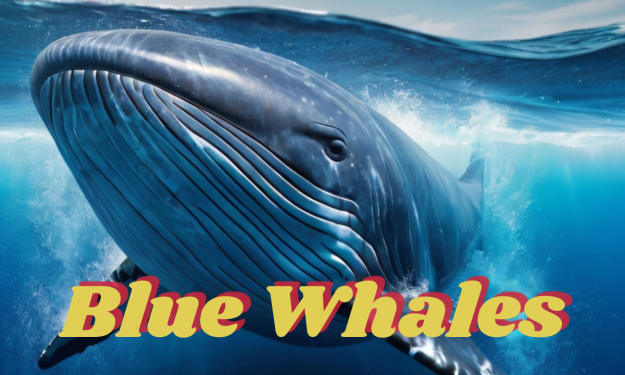Hopping into the Heart of Australia: A Look at Kangaroos
The Australian Kangaroo
Kangaroos are an iconic symbol of Australia, instantly recognizable for their powerful legs, long tails, and adorable joeys. These fascinating creatures are found throughout the vast Australian landscape, playing a vital role in maintaining the balance of nature. However, like many other wildlife species, kangaroos face challenges in a changing world, requiring our understanding and support to ensure their continued existence.
A Unique and Powerful Species
Australia is a land of incredible biodiversity, and kangaroos stand out as a remarkable example. They are the largest marsupials on Earth, and their unique adaptations to the Australian environment have captivated people worldwide. There are four main species of these marsupials: the red kangaroo, the eastern grey kangaroo, the western grey kangaroo, and the antilopine kangaroo. The red kangaroo, the largest of the species, boasts impressive size, with males reaching over 6 feet tall and weighing over 200 pounds. They are easily distinguished from the smaller grey kangaroos by their reddish-brown fur.
Kangaroos are herbivores, relying on a diet of grasses and other plants. Their diet can vary depending on the region, with some species favoring different types of grasses or even shrubs. Their unique digestive system allows them to extract maximum nutrients from their food, a crucial adaptation in the often harsh Australian outback where food can be scarce. They have a complex digestive process, with a large, multi-chambered stomach that helps break down tough plant matter and extract nutrients even from low-quality food sources.
Their powerful legs are built for hopping, enabling them to cover vast distances with each leap, reaching speeds of up to 40 miles per hour. Their long tails serve as a counterweight, maintaining balance during their impressive jumps, and also help them to steer and make sharp turns. The kangaroo's tail is also a powerful weapon that can be used for defense when needed.
A Mother's Love: The Joey's Journey
One of the most endearing aspects of kangaroos is their parental care. Female kangaroos have a pouch, a nurturing haven for their young. This pouch is a remarkable evolutionary adaptation that provides a safe and comfortable environment for the developing joey. A joey is born tiny and undeveloped, immediately crawling into its mother's pouch to continue its development. The joey is so small at birth that it resembles a jellybean, and it relies completely on its mother for survival.
Click here to watch the video!!
The joey remains in the pouch for several months, nursing and growing until it is strong enough to venture out on its own. During this time, the pouch provides warmth, protection, and nourishment. The mother kangaroo has a special nipple in her pouch that is dedicated to the joey. As the joey grows, it will gradually spend more time outside the pouch, exploring its surroundings and learning from its mother.
Social Structures: Mobs and Communication
Kangaroos are not solitary creatures. They live in groups called mobs, ranging in size from just a few individuals to over 100. These mobs can vary in size and composition, with some consisting mostly of females and their young, while others may include a larger number of males. Within these mobs, communication is crucial. Kangaroos use a variety of sounds, including grunts, hisses, and coughs, to communicate with each other. These sounds convey messages about danger, food, and mating. They also use body language, such as tail movements and ear positions, to communicate.
Challenges in a Changing World
Despite their resilience and adaptations, kangaroos face a number of challenges in a changing world. Habitat loss due to development and agriculture poses a significant threat to their survival. As human settlements and farming practices expand, kangaroos are losing their natural habitats, forcing them to compete for resources in increasingly limited areas. This competition for food and space can lead to conflict with humans, and sometimes even result in kangaroos being culled to manage populations.
Climate change also plays a role, with droughts and bushfires becoming more frequent and severe. These extreme weather events can decimate kangaroo populations by destroying their food sources and habitats. Droughts can lead to a shortage of grasses, while bushfires can wipe out entire populations of kangaroos.
Conservation Efforts: A Collective Responsibility
Recognizing the threats facing these iconic animals, conservation efforts are underway to protect kangaroos and their habitats. These efforts include:
• Establishing National Parks and Reserves: Protecting vast areas of natural habitat ensures the long-term survival of kangaroo populations. These areas provide refuge from human encroachment and give kangaroos the space they need to thrive.
• Managing Grazing Pressures: Controlling livestock grazing in kangaroo habitats helps to reduce competition for resources and allows vegetation to recover. This ensures that kangaroos have enough food to survive and reproduce.
• Reducing Habitat Fragmentation: Connecting fragmented habitats allows kangaroos to move freely and access vital resources. By creating corridors that allow kangaroos to move between different areas, conservationists can help them maintain healthy populations.
• Public Education: Increasing awareness about kangaroos and the challenges they face is crucial for fostering understanding and promoting responsible actions. Educating people about the importance of kangaroos and the threats they face can inspire people to take action to protect them.
By supporting conservation organizations, advocating for wildlife-friendly policies, and educating ourselves and others, we can contribute to the protection of these fascinating creatures.
Click here to watch the video!!
Conclusion
Kangaroos are more than just a symbol of Australia; they are a crucial part of the Australian ecosystem, playing a vital role in maintaining its balance. Their future depends on our understanding, respect, and responsible actions. By supporting conservation efforts and advocating for their well-being, we can help ensure that these iconic creatures continue to hop across the Australian landscape for generations to come.
About the Creator
Ahmed Bahaa Eldin Mohamed
Get Ready for the Smart Revolution with Technology for Smart Sphere's Expert Analysis. You will know all about the latest Insights on Smart Technology
Enjoyed the story? Support the Creator.
Subscribe for free to receive all their stories in your feed. You could also pledge your support or give them a one-off tip, letting them know you appreciate their work.






Comments (2)
Thanks for your valuable comment.
Hey, just wanna let you know that this is more suitable to be posted in the Earth community 😊